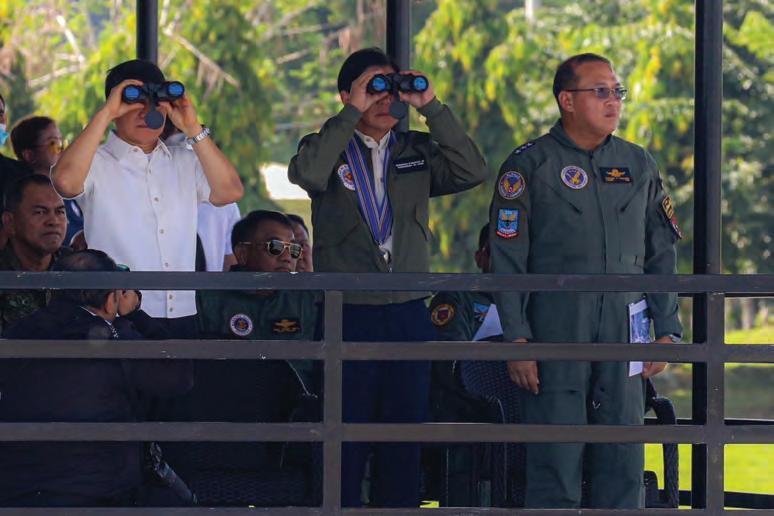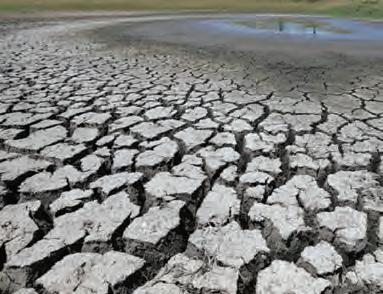
4 minute read
On July 4, Marcos reaffirms PHL, US ‘deep connection’
By Jennifer T. Santos
MANILA – On Philippine American Friendship Day, President Ferdinand R. Marcos Jr. renewed the Philippines’ “deep connection” with its long-time ally, the United States.
Meanwhile, US Ambassador MaryKay Carlson said the United States is committed to supporting the Philippines’ growth and development goals as economic partnership is flourishing.
“On this joyous occasion of Philippine-American Friendship Day, we commemorate the deep connection between our nations, built on the foundation of trust and collaboration,” Marcos said.
Marcos vowed that the Philippines would stand united with the US.
He said the continued collaboration and cooperation with the US would bring progress and development to the Philippines.
“As allies, let us continue to stand together, embracing the values of democracy, freedom and equality, forging a path towards a more prosperous and inclusive future for all,” Marcos said.
Marcos’ official visit to the US in May affirmed the two nations’ strong ties.
His visit has yielded at least US$1.3 billion (P71.8 billion) worth of investment pledges that have the potential to create around 6,700 new jobs for Filipinos.
Meanwhile, US Ambassador MaryKay Carlson said: “This July 4, Americans all over the world are celebrating the 247th anniversary of U.S. independence. Here in the Philippines, we are also commemorating the 69th Philippine-American Friendship Day, making July 4 doubly special –a time to celebrate all that the Philippines and the United States have accomplished together as steadfast friends, #PartnersInProsperity, and ironclad allies.”
Carlson’s full July 4 message follows:
“This July 4, Americans all over the world are celebrating the 247th anniversary of U.S. independence. Here in the Philippines, we are also commemorating the 69th Philippine-American Friendship Day, making July 4 doubly special – a time to celebrate all that the Philippines and the United States have accomplished together as steadfast friends, partners in prosperity, and ironclad allies.
Since I arrived in July last year, I’ve had the opportunity to see the deep, multifaceted U.S.-Philippine relationship at work. During a recent trip to Cebu, I met talented new friends from the vibrant network of U.S. exchange alumni in the Visayas. In Ilocos Norte, I learned how our development efforts are improving energy efficiency standards, a key part of the Philippines’ clean energy transition. Last October, I had the honor to share the stage with President Marcos in Tacloban to commemorate the Leyte Gulf landing, honoring our shared history; while during a recent visit to Isabela province, I witnessed how U.S. and Philippine troops are working together today to modernize our alliance – training at Camp Melchor Dela Cruz. These trips and the many other milestones mark strong momentum in U.S.-Philippine relations.
This year’s highlight in our bilateral ties was the resoundingly successful visit to Washington, D.C. by President Ferdinand R. Marcos Jr. During President Marcos’s Oval Office meeting with President Biden, our leaders discussed the full spectrum of our relationship as friends, partners, and allies. President Biden reaffirmed our ironclad commitment to the Alliance and announced a first-of-its-kind Presidential Trade and Investment Mission to the Philippines. Our leaders also discussed new efforts to promote clean energy, expand science and technology cooperation, and protect the environment. President Marcos also met with multiple U.S. cabinet members. I was particularly struck by the lively, substantive discussion President Marcos had with Secretary of Agriculture Tom Vilsack, resulting in innovative programs to tackle food and nutrition insecurity.
This year, we also saw the successful conclusion of the largest, most complex
El Niño begins,
CITY -- El Niño has started in the country although still weak.
The Philippine Atmospheric, Geophysical, and Astronomical Services Administration (PAGASA) said the El Niño phenomenon will intensify and could cause dry spells and droughts in at least 30 provinces, in the last quarter of the year and the first half of 2024.

Metro Manila may also experience the effects of El Niño, but PAGASA will still have to look into the forecast.
“It’s possible that Metro Manila will experience dry spell by the end of December. That means the region may have lesser rains for three months, then dry spell for the next three months,” forecasters said.
Lesser rainfall is not the only impact of El Niño.
The effects could also be on agricul- iteration of Exercise Balikatan. Over 17,000 troops from the United States and the Philippines, as well as a contingent from Australia, trained shoulderto-shoulder on land, at sea, in the air, and – for the first time – in cyberspace. Together, we announced four new locations where our countries will make investments to improve Philippine military infrastructure and capabilities under the Enhanced Defense Cooperation Agreement, or EDCA. Projects implemented at these EDCA locations will advance the Philippine Armed Forces’ modernization goals and bring tangible economic benefits to local communities, creating jobs and opportunities for local businesses. The Philippines is the largest recipient of U.S. security assistance in the Indo-Pacific. Strengthening our Alliance helps secure peace and prosperity for our peoples.
U.S.-Philippine economic partnerships are flourishing. In May, I visited two top-tier U.S. businesses in Cebu, Timex and Teradyne. Like many U.S. companies operating in the Philippines, Timex and Teradyne provide thousands of Filipinos with high-quality, high-pay- ing jobs – including as managers and executives. U.S. businesses value the talent of the Filipino workforce and, more and more, are looking to the Philippines as an attractive place to trade and invest. For example, Moderna has chosen the Philippines as its first-ever operational hub in Asia. We look forward to building on this momentum as partners in prosperity. “
In 1955, then president Ramon Magsaysay signed Proclamation 212 establishing the observance of PhilippineAmerican Day. The following year, the celebration became an annual event through Proclamation 363.
Under the administration of Marcos’ father and namesake, Ferdinand E. Marcos, the Philippine-American Day was renamed Philippine-American Friendship Day and moved its celebration every July 4, overshadowing the observance of the date as Republic Day.
The practice of celebrating Philippine-American Friendship Day and Philippine Republic Day was abolished under the leadership of former president Corazon Aquino but was reconstituted by then president Fidel V. Ramos in 1996.










